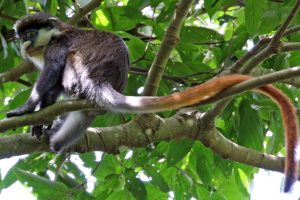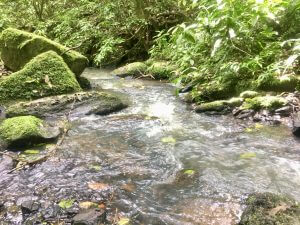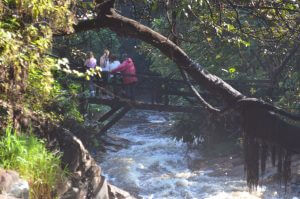Mabira Forest Reserve holds a special place in Uganda’s rich ecological landscape, captivating visitors with its lush biodiversity, towering trees, and vital ecosystem services.
Located in the heart of the country, this expansive tropical rainforest has long been a sanctuary for diverse flora and fauna, as well as a source of ecological balance and natural resources for local communities.
Mabira Forest Reserve, encompassing an area of over 300 square kilometers, is home to a remarkable array of plant and animal species.
The forest’s towering canopy shelters hundreds of tree species, including mahogany, mvule, and other valuable hardwoods.
This rich diversity of flora provides habitat and sustenance for an abundance of wildlife, including primates like the red-tailed monkey, the olive baboon, and various species of colorful birds.
In addition to its remarkable biodiversity, Mabira Forest plays a crucial role in regulating local climate patterns, and its dense vegetation helps mitigate soil erosion, purify the air, and maintain water quality in the region.
The reserve serves as a crucial watershed for several rivers and streams, providing irrigation, drinking water, and sustenance for agricultural activities in surrounding areas.
Conservation and threats. Despite its ecological significance, Mabira Forest Reserve has faced threats from various human activities, including illegal logging, encroachment for agriculture, and infrastructure development.
In the early 2000s, the forest gained international attention when plans to convert a portion of it into sugarcane plantations sparked widespread protests and conservation campaigns.
The Ugandan government declared Mabira a protected area, emphasizing the need for sustainable conservation and management practices.
Conservation efforts have included community-based initiatives, ecotourism programs, and partnerships between local conservation organizations and government agencies.
These efforts aim to strike a balance between conserving the forest’s ecological integrity, promoting sustainable livelihoods for local communities, and fostering responsible tourism and education.
Mabira Forest Reserve has also emerged as an ecotourism destination, attracting nature enthusiasts, bird watchers, and eco-conscious travelers.
Guided nature walks, birding expeditions, and canopy exploration tours offer visitors an opportunity to immerse themselves in the forest’s natural beauty and learn about its ecological importance.
Additionally, community-based projects, such as handicraft cooperatives and eco-lodges, provide economic opportunities for local residents and contribute to the preservation of the forest.
Furthermore, Mabira serves as an outdoor classroom for environmental education, raising awareness about the importance of tropical forests, biodiversity conservation, and sustainable land use practices.
School groups, researchers, and conservationists frequently visit the reserve to study its unique ecosystems and contribute to ongoing research and monitoring efforts.
Mabira Forest Reserve stands as a vital ecological gem in Uganda, showcasing the interconnectedness of nature, local communities, and sustainable development.
Its protection and conservation not only safeguard a reservoir of biodiversity but also provide a model for harmonizing ecological preservation and human well-being.
By valuing and preserving this natural treasure, Uganda sets an example of responsible stewardship for future generations, inspiring a legacy of conservation and sustainable coexistence with the natural world.



